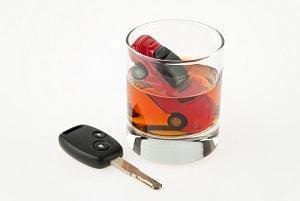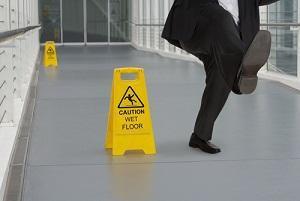Recent Blog Posts
Safety Tips for Motorcycle Riders as Spring Approaches
 While unseasonably cool temperatures and winter-type weather may still affect Connecticut residents for a few more weeks, spring is on its way. As the temperatures start to come up, increased numbers of individuals and families will begin spending time outside. For motorcycle owners and enthusiasts in the Northeast, spring also marks the beginning of a new riding season. Rider safety groups and government safety officials in Connecticut and around the country encourage riders to protect themselves and to help keep roadways safe for other drivers. Every driver, pedestrian, and motorcycle rider has a responsibility to take reasonable steps to prevent motorcycle accidents and the injuries they cause.
While unseasonably cool temperatures and winter-type weather may still affect Connecticut residents for a few more weeks, spring is on its way. As the temperatures start to come up, increased numbers of individuals and families will begin spending time outside. For motorcycle owners and enthusiasts in the Northeast, spring also marks the beginning of a new riding season. Rider safety groups and government safety officials in Connecticut and around the country encourage riders to protect themselves and to help keep roadways safe for other drivers. Every driver, pedestrian, and motorcycle rider has a responsibility to take reasonable steps to prevent motorcycle accidents and the injuries they cause.
Each year, thousands of motorcycle riders are killed on American roadways, and many thousands more are injured. The tragic reality is that a large number of these injuries and deaths could be prevented if riders follow a few simple safety guidelines:
Federal Judge Orders New Sentencing Hearing for Former Gang Member
 Over the last few years, there has been much debate regarding efforts in Connecticut to rethink how young adults should be treated in the realm of criminal law. Courts have long held that a person who is 18 years old or older should be fully responsible for his or her actions. Defendants under the age of 18 are typically granted considerations based on the idea that a minor’s brain is not yet fully developed.
Over the last few years, there has been much debate regarding efforts in Connecticut to rethink how young adults should be treated in the realm of criminal law. Courts have long held that a person who is 18 years old or older should be fully responsible for his or her actions. Defendants under the age of 18 are typically granted considerations based on the idea that a minor’s brain is not yet fully developed.
In Connecticut, specifically, Governor Dannel P. Malloy has championed the idea of creating a separate court system for young adults up to age 23. Such a system would take able to take into account a defendant’s development and other factors when determining sentencing and the prospect of rehabilitation. Late last month, a ruling by a federal judge in Connecticut gave additional credibility to the concept of a young adult justice system by ordering a new sentencing hearing for a man convicted of committing murder at the age of 18.
Growing Concern Over Safety at Trampoline Parks
 Large trampolines can be found in the backyards of thousands of homes across the country—primarily in suburban areas. Straddling the line between sports equipment and toys, trampolines promise bouncy fun for children and adults alike, but they are not without their risks. In fact, a study from several years ago estimated that backyard trampoline accidents send more than 100,000 people to the emergency room every year.
Large trampolines can be found in the backyards of thousands of homes across the country—primarily in suburban areas. Straddling the line between sports equipment and toys, trampolines promise bouncy fun for children and adults alike, but they are not without their risks. In fact, a study from several years ago estimated that backyard trampoline accidents send more than 100,000 people to the emergency room every year.
Over the last few years, trampolines have headed inside, as indoor trampoline parks have become wildly popular. Franchise chains such as Launch, Sky Zone, Big Air, and Rebounderz have opened hundreds of locations nationwide and around the world. As their popularity grows, however, so does the danger of injury, and medical experts indicate that the number of trampoline park injuries has exploded by more than 1,000 percent in just a few short years.
Police Seize Connecticut Man’s Guns After Threats of Suicide
 A former Connecticut police officer was sitting at home minding his own business when five state troopers arrived with a warrant to seize all of his legally-owned firearms. The 76-year-old man had committed no crime, had no history of violence, was not under arrest, and was not being charged, but the state police still seized more than 80 guns from the man’s home pursuant to a Firearm Safety Warrant. Connecticut is one of just five states to allow this type of controversial warrant, though many more are considering them in light of recent tragedies involving gun violence.
A former Connecticut police officer was sitting at home minding his own business when five state troopers arrived with a warrant to seize all of his legally-owned firearms. The 76-year-old man had committed no crime, had no history of violence, was not under arrest, and was not being charged, but the state police still seized more than 80 guns from the man’s home pursuant to a Firearm Safety Warrant. Connecticut is one of just five states to allow this type of controversial warrant, though many more are considering them in light of recent tragedies involving gun violence.
Firearm Safety Warrants
In 1999, the Connecticut Legislature passed what lawmakers called "risk warrant" legislation. The law allows courts to issue firearm seizure warrants based on reports from the general public that a person (gun owner) poses an immediate threat of personal injury to themselves or others. The subject of such a warrant does not need to have broken any laws in order for the seizure to be conducted. The police can hold seized firearms for up to two weeks while a hearing is scheduled. At the hearing, a judge then determines the status of the guns. Some are returned to the owner immediately, others are held for up to one year, and a small number are forfeited and sold or destroyed.
Scientists Push for Lower DUI Legal Limit
 Almost all of us have been affected by drunk driving in some way or another. Some of those reading have gotten into fender benders with someone they suspect was drinking. Others have been seriously injured in car accidents caused by an impaired driver. Still others have friends or family members who have been killed or injured in a car accident involving alcohol. Incidents involving an alcohol-impaired driver cause approximately 10,000 deaths in the U.S each year. Lawmakers have responded to the problem of drunk drivers by imposing serious criminal penalties for those who drive with a blood alcohol content (BAC) over the legal limit. Now, that BAC threshold which determines if someone is breaking the law or not may be lowered.
Almost all of us have been affected by drunk driving in some way or another. Some of those reading have gotten into fender benders with someone they suspect was drinking. Others have been seriously injured in car accidents caused by an impaired driver. Still others have friends or family members who have been killed or injured in a car accident involving alcohol. Incidents involving an alcohol-impaired driver cause approximately 10,000 deaths in the U.S each year. Lawmakers have responded to the problem of drunk drivers by imposing serious criminal penalties for those who drive with a blood alcohol content (BAC) over the legal limit. Now, that BAC threshold which determines if someone is breaking the law or not may be lowered.
Blood Alcohol Content Threshold
A prestigious panel of the National Academics of Sciences, Engineering and Medicine is recommending that states lower the legal limit which determines is someone is charged with driving under the influence (DUI). As it currently stands, all states have a BAC limit of 0.08 percent, although Utah has passed a law which will lower the legal limit beginning December 30. The 489-page report suggests that changing the BAC threshold from 0.08 percent to 0.05 percent would ultimately result in fewer deaths and injuries caused by drunk drivers. A person’s blood alcohol content is determined by several factors, not just how much alcohol they have had to drink. So, this proposed measure would affect drinkers in different ways. For example, a 150-pound man might require two drinks to reach 0.05 percent BAC while it may take a physically smaller person only one drink to reach a BAC of 0.05 percent.
Dual Arrest Rate Prompts Calls for Changes to Connecticut Domestic Violence Laws
 When the police respond to a report of a domestic disturbance, how they handle the situation is determined by a number of factors. Of course, the behavior of and allegations made by the parties involved will contribute to the officer’s decision on whether or not to make an arrest. The applicable laws of the state in question also matter and can vary widely from one state to the next.
When the police respond to a report of a domestic disturbance, how they handle the situation is determined by a number of factors. Of course, the behavior of and allegations made by the parties involved will contribute to the officer’s decision on whether or not to make an arrest. The applicable laws of the state in question also matter and can vary widely from one state to the next.
In Connecticut, an officer is essentially required to make an arrest when responding to a domestic violence call if he or she has probable cause to believe that violent incident took place. Unfortunately, however, the wording of the law—which went into effect in 1987—has had the unintended consequence of raising the rate of dual arrests to more than double the national average. In recent weeks, victims’ advocate groups have renewed calls to amend the state’s laws so that victims will no longer need to fear being arrested when they call the police for help.
Proving Liability in a Slip and Fall Injury Case
 When you enter into or onto another person’s property, the owner of the property is responsible for making sure that you are safe. This does not mean that the property owner is necessarily tasked with protecting you from yourself, but it does mean that the premises must be kept free of hazards that could lead to a slip and fall or a trip and fall. If the owner fails to keep the property safe and you are injured as a result, you may be able to collect compensation under the principles of premises liability.
When you enter into or onto another person’s property, the owner of the property is responsible for making sure that you are safe. This does not mean that the property owner is necessarily tasked with protecting you from yourself, but it does mean that the premises must be kept free of hazards that could lead to a slip and fall or a trip and fall. If the owner fails to keep the property safe and you are injured as a result, you may be able to collect compensation under the principles of premises liability.
Recovering damages after a slip and fall injury will require you—with the help your attorney—to prove four basic elements:
A Duty of Care
The first thing you must prove is that the person or entity from whom you are seeking compensation actually owed you a duty of care. In other words, you must show that the defendant is the owner of the property in question or is otherwise responsible for the condition of the premises. The duty of care owed by a property owner may also depend on your reasons for being on the property. For example, if you were injured in a store during normal business hours, the duty of care owed to you would be greater than if you had broken in late at night.
Closing of Juvenile Prison Creates Uncertain Future Young Offenders
 At the moment, there is just one prison in the entire state of Connecticut for juveniles who commit crimes that are not serious enough for the "adult" court system. That prison, however, is in the process of closing, leaving many wondering what will happen to the juveniles currently being held there and those who commit such offenses in the future.
At the moment, there is just one prison in the entire state of Connecticut for juveniles who commit crimes that are not serious enough for the "adult" court system. That prison, however, is in the process of closing, leaving many wondering what will happen to the juveniles currently being held there and those who commit such offenses in the future.
Secure Facility
The Connecticut Juvenile Training School in Middletown is a high-security correctional facility designed to hold the most troubled boys in the state’s juvenile justice system. The juvenile delinquents committed to the center have not necessarily committed the worst crimes—those offenders are typically transferred to a standard or adult criminal court and prison system, as necessary. Instead, the boys are essentially the most in need of careful supervision, as many are dealing the effects of physical trauma, mental illness, drug abuse, and dysfunctional families.
Textalyzer May Help Find Distracted Drivers, But At What Cost?
 There is no doubt that distracted driving is a deadly problem. In 2015 alone, 3,477 people were killed in car accidents involving a distracted driver, and 391,000 more were injured. Police have increased their efforts to prevent these needless tragedies by catching drivers illegally using their cell phones while driving, In Connecticut, for example, using a hand-held cell phone is a primary offense which means drivers can be pulled over if they are seen texting or holding a phone to their ear while driving. Now, an emerging technology promises to help police find distracted drivers, but many think the technology is superfluous and a serious invasion of privacy.
There is no doubt that distracted driving is a deadly problem. In 2015 alone, 3,477 people were killed in car accidents involving a distracted driver, and 391,000 more were injured. Police have increased their efforts to prevent these needless tragedies by catching drivers illegally using their cell phones while driving, In Connecticut, for example, using a hand-held cell phone is a primary offense which means drivers can be pulled over if they are seen texting or holding a phone to their ear while driving. Now, an emerging technology promises to help police find distracted drivers, but many think the technology is superfluous and a serious invasion of privacy.
The Breathalyzer of Distracted Driving
Textalyzer is a play on the word Breathalyzer and like a breathalyzer, the technology can help police ascertain if distracted driving contributed to an accident. The Textalyzer technology has the ability to analyze data within a person’s cell phone in order to determine whether the phone was used immediately prior to an accident. Bills have been introduced in several states that would authorize law enforcement officers to confiscate a driver’s phone after a crash so they could run the Textalyzer analysis on it. If the driver refuses to hand over their phone for this analysis their license would be automatically suspended – similar to drivers who refuse Breathalyzer tests. If the driver submits to the Textalyzer analysis and it shows that he or she was using the phone prior to a car accident, it can be used as evidence of distracted driving.
Federal Order on Asset Seizure at Odds With State Laws
 When a person is convicted of committing a crime, it is understandable that the government might have interest in seizing proceeds generated by the commission of that crime. For example, if a drug dealer is arrested and convicted, the money he or she made selling drugs can reasonably be seized and kept by law enforcement and other state agencies—with proper reporting, of course. It also reasonable for the state to seize and keep other property that may have been used in the commission of the crime. A good example might be the computer used by a convicted scammer to defraud unsuspecting victims.
When a person is convicted of committing a crime, it is understandable that the government might have interest in seizing proceeds generated by the commission of that crime. For example, if a drug dealer is arrested and convicted, the money he or she made selling drugs can reasonably be seized and kept by law enforcement and other state agencies—with proper reporting, of course. It also reasonable for the state to seize and keep other property that may have been used in the commission of the crime. A good example might be the computer used by a convicted scammer to defraud unsuspecting victims.
For many years, state and federal government agencies had wide discretion to seize assets that were allegedly linked to criminal activity. The problem, however, was that the agencies could—in many cases—keep the assets even if the assets’ owner was never convicted or even charged. The process for getting seized property back was often difficult, time-consuming, and expensive, and many owners simply gave up.






